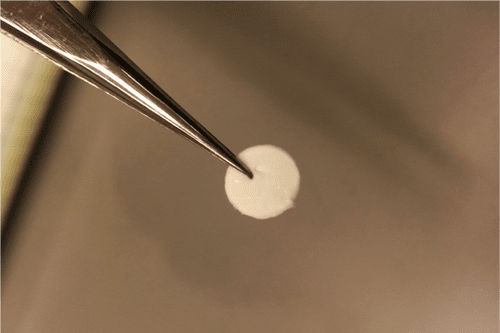
Balfour Sartor, MD
Balfour Sartor, MD, Midget Distinguished Professor of Medicine, Microbiology and Immunology, is the senior author of a study that shows how a novel consortium of bacteria that live in the digestive tracts of healthy individuals can be used to prevent and treat aggressive colitis in humanized mouse models.
A new study published in Nature Communications demonstrates that a consortium of bacteria designed to complement missing or underrepresented functions in the imbalanced microbiome of inflammatory bowel disease (IBD) patients, prevented and treated chronic immune-mediated colitis in humanized mouse models. The study’s senior author, Balfour Sartor, MD, Midget Distinguished Professor of Medicine, Microbiology and Immunology, Co-Director of the UNC Multidisciplinary IBD Center, said the results are encouraging for future use treating Crohn’s disease and ulcerative colitis patients.
“The idea with this treatment is to restore the normal function of the protective bacteria in the gut, targeting the source of IBD, instead of treating its symptoms with traditional immunosuppressants that can cause side effects like infections or tumors,” Sartor said.
The live bacteria consortia, called GUT-103 and GUT-108, were developed by biotech firm Gusto Global. GUT-103 is comprised of 17 strains of bacteria that work together to protect and feed each other. GUT-108 is a refined version of GUT-103, using 11 human isolates related to the 17 strains. These combinations permit the bacteria to stay in the colon for an extended amount of time, as opposed to other probiotics that are not capable of living in the gut and pass through the system quickly.
GUT-103 and GUT-108 were given orally three times a week to “germ-free” mice (no bacteria present) that had been specially developed and treated with specific human bacteria, creating a humanized mouse model. The therapeutic bacteria consortia worked by addressing upstream targets, rather than targeting a single cytokine to block downstream inflammation responses, and reversed established inflammation.
“It also decreased pathobionts – bacteria that can cause harm – while expanding resident protective bacteria, and produced metabolites promoting mucosal healing and immunoregulatory responses,” Sartor said. “Simply put – the treatment increased the good guys and decreased the bad guys.”
Because of the robust results seen in this study, and the need for more alternative therapies for Crohn’s disease, Sartor would like to see GUT-103 and GUT-108 studied in Phase 1 and 2 clinical trials in the future. He plans to continue his work with Gusto Global to further explore uses of the bacterial consortia.
Original Article: ‘Good’ Bacteria Show Promise for Clinical Treatment of Crohn’s Disease, Ulcerative Colitis
More from: University of North Carolina School of Medicine | University of North Carolina at Chapel Hill
The Latest Updates from Bing News & Google News
Go deeper with Bing News on:
Crohn’s disease
- Abivax announces presentation of four abstracts for obefazimod in ulcerative colitis and preclinical colon cancer model at Digestive Disease Week 2024
DJ Abivax announces presentation of four abstracts for obefazimod in ulcerative colitis and preclinical colon cancer model at Digestive Disease Week 2024 ABIVAX Abivax announces presentation of four ...
- Mastering Life Beyond the Gut: A Crohn's Advocate's Journey Through Extra-Intestinal Manifestations
Explore the complex world of extra-intestinal manifestations (EIMs) in IBD through a personal journey, highlighting the systemic impact and treatment options.
- My inflammatory bowel disease started as a bug but escalated quickly – I was in hospital for months
AROUND 40,000 Irish people suffer with inflammatory bowel disease – but due to the nature of the condition, very few are open about it. One in five people in Ireland have IBD, and twice as ...
- LIVING WITH CROHN'S DISEASE: Idaho residents reflect on diagnoses, main causes still a mystery
Crohn’s disease is a long lasting disease that is known for swelling and inflammation along your digestive tract. It is most commonly seen in the large and small bowel intestine.
- Physical Activity Helps Ward Off Inflammatory Bowel Disease, Meta-Analysis Shows
Higher levels of physical activity are associated with a decreased risk of developing inflammatory bowel disease (IBD), particularly Crohn's disease (CD).
Go deeper with Google Headlines on:
Crohn’s disease
[google_news title=”” keyword=”Crohn’s disease” num_posts=”5″ blurb_length=”0″ show_thumb=”left”]
Go deeper with Bing News on:
Ulcerative colitis
- Abivax announces presentation of four abstracts -2-
DJ Abivax announces presentation of four abstracts for obefazimod in ulcerative colitis and preclinical colon cancer model at Digestive Disease Week 2024 ABIVAX Abivax announces presentation of four ...
- Abivax announces presentation of four abstracts for obefazimod in ulcerative colitis and preclinical colon cancer model at Digestive Disease Week 2024
DJ Abivax announces presentation of four abstracts for obefazimod in ulcerative colitis and preclinical colon cancer model at Digestive Disease Week 2024 ABIVAX Abivax announces presentation of four ...
- Global Ulcerative Colitis Treatment Market Projected to Reach USD 11.8 Billion by 2032, with a 6.0% CAGR | FMI
The global ulcerative colitis treatment market is poised for significant growth, with projections indicating a Compound Annual Growth Rate (CAGR) of 6.0% from 2021 to 2032. Valued at approximately USD ...
- Everest Medicines Announces New Drug Application Approval of VELSIPITY® for Adults with Moderately to Severely Active Ulcerative Colitis in Macau
Everest Medicines (HKEX 1952.HK, “Everest”, or the “Company”), a biopharmaceutical company focused on the discovery, development, manufacturing and commercialization of innovative medicines and ...
- Can I Drink Herbal Tea If I Have Colitis? A Review By Nutrition Professionals
Expert opinion from Maria Arienti Postgraduate in Nutritional Support/Bachelor in Nutrition · 13 years of experience · Argentina Drinking herbal or green tea is considered a good complementary therapy ...
Go deeper with Google Headlines on:
Ulcerative colitis
[google_news title=”” keyword=”ulcerative colitis” num_posts=”5″ blurb_length=”0″ show_thumb=”left”]










